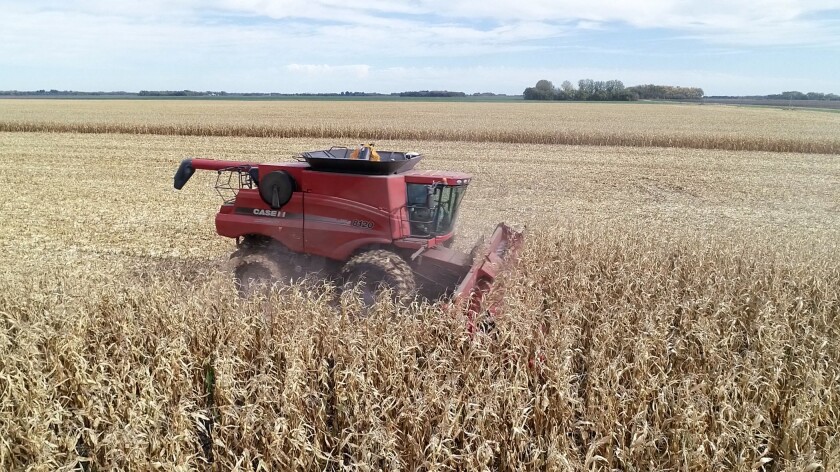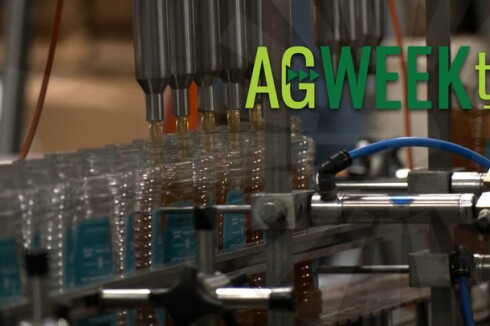Editor's note: This is a part of the ongoing Follow a Farmer Agweek series where the Agweek editorial team follows farmers across the Upper Midwest to learn about their farms, backgrounds and the progress of the 2021 growing season. Agweek publisher Katie Pinke has been checking in with Tom Metz of Northwood, North Dakota. To read earlier stories about Metz, click here and here and here .
NORTHWOOD, North Dakota — On Oct. 9-10, the fields of Ostlie Farms received about 2 inches of rain.
Even though the rain came in the midst of corn harvest, Tom Metz said the precipitation was a welcome rebuild for next year after a drought-stricken 2021 that saw stretches of months without 2 inches of rain falling.
Plus, the moisture didn't slow anyone down for long.
"Judging by the fact that we were combining Monday afternoon, that tells you where our soil's at," Metz said. "It soaked it right up and we were able to keep going."
ADVERTISEMENT

Metz farms on the Ostlie Farms with his brother-in-law Richie Ostlie. Metz is married to Ostlie's sister, Jenny. Ostlie Farms is close to 50-50 corn and soybeans most years, with a rare field of wheat thrown in for rotation purposes. This year, it's closer to 55% corn and 45% soybeans.
The soybeans this year came in close to average, and Metz said corn was looking similarly average with about half of the acres combined on Oct. 12. While some yields were lower than expected on worse fields, some better fields came out with higher yields than anticipated.
"Probably the biggest surprise is that we're probably going to be close to average on the crop, which, on a year, again like this, we're very happy with that," Metz said.
Moisture so far had ranged from 14% to 21%, with a lot in the 18-19% range. All in all, it was "kind of what we expected," he said.
Ostlie Farms can hold pretty much all of the corn from an average crop at its bin site, so Metz said the trucks would haul the corn home before it is taken to its final destinations. He estimated that about two-thirds of the farm's production goes to ethanol plants, with some going north to Canada to feed hogs. The farm works with two ethanol plants and two elevators, giving it multiple marketing options.
Even though more rain was in the works for the next day, Metz said he was comfortable with Ostlie Farms harvest progress. With pleasant weather, combining through the month of October is no problem, he said.
ADVERTISEMENT

Plus, the rain is necessary for next year's crop, even if it's too late for this year's, he said. The rain falling now lessens the dependence on snow over the winter to alleviate the drought conditions. So, it's welcome, even when combining is on the agenda.
"When it comes, we're sure as heck not going to say no to it," Metz said.

After harvest is complete, Metz said he's looking forward to some downtime with family. But Ostlie Farms also will turn toward getting ready for the 2022 crop. That includes checking out chemical, fertilizer and seed options for the next growing season.
"Prices are a little bit scary at this point as far as the inputs, so we're just trying to see," Metz said. "Some of it, we feel like maybe we should buy because it could get a lot worse, but it's already high enough that you're like, I don't know how much I want to buy."




